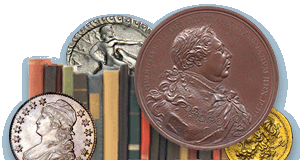
PREV ARTICLE
NEXT ARTICLE
FULL ISSUE
PREV FULL ISSUE
STACK'S BOWERS: HENGEVELD'S MAASTRICHT FAVORITESAlso regarding the Maastricht Sale, Stack's Bowers Director of Consignments & Senior Numismatist Dennis Hengeveld published this article about some of his personal favorite items in the sale in the firm's Paper Money of The Week column. -Garrett By now, you have probably seen the online catalog of the Fall 2025 Maastricht Showcase Auction, and printed catalogs will be in the mail shortly. In this blog, we will look at five notes that I personally like, for various reasons. If you have been reading these blogs for a while, you know that I have a keen interest in history, and I like several of these notes for their historical aspects. Others I like for their eye appeal or because of their rarity. As a result, these are not necessarily the most expensive notes in the sale, but notes that I think you should pay attention to. 
Lot 50018 – BELGIAN CONGO. Banque du Congo Belge. 5 Francs, 4.4.1930. P-8e. PMG Choice Uncirculated 64 EPQ.
This is a type that I have always been fond of, thanks to its pastel colors and tranquil scenes on both sides. A note with relatively modest face value, most seen in the marketplace today are in heavily circulated condition, and uncirculated examples are scarce. This example stood out to me because of the ‘EPQ' designation, indicating total originality, an exception to the rule, as these notes often have staining, pinholes, or other problems. 
Lot 50146 – FRANCE. Tresor Public. 5000 Francs, ND (1955). P-M13s. Specimen. PMG Choice Uncirculated 64 EPQ.
An underrated and relatively unknown issue of France that was used by the military in the French zones of occupied Germany after World War II. A lovely design is seen on this series, which was printed in fairly limited quantities, with issued notes often in heavily circulated grades. This specimen is fresh and bright, with excellent eye appeal and, as mentioned in the description, this is a note that surely belongs in advanced French and German collections due to its historical significance. 
Lot 50196 – GREENLAND. Kongelige Gronlandske Handel. 1 Krone, 1911. P-9. Serial Number 2. PMG Uncirculated 62 EPQ.
One of the most famous and valuable baseball cards in the world is the 1952 Topps Mickey Mantle, a card much rarer than it ought to be, after unsold stacks were dumped into the ocean years later. A remarkably similar fate befell this Greenland banknote, issued four decades earlier. Withdrawn only a few years after release, the remaining stock was taken into the Atlantic and thrown overboard. Surviving notes are rare, and this example is especially desirable as it bears serial number 2. While many 1952 Mantle cards now trade for six or seven figures depending on grade, this Greenland note, despite its greater rarity, can be acquired for a fraction of that price. For collectors of world paper money, such opportunities highlight how undervalued some areas remain compared to other collectibles. 
Lot 50230 – IRELAND. Central Bank of Ireland. 50 Pounds, 4.4.1977. P-68c. LTN66. PMG Superb Gem Uncirculated 67 EPQ.
If you were to ask me what my favorite series of banknotes is, my go to answer is the ‘Lady Lavery' series of Ireland, issued between 1928 and 1977. The series shows the portrait of Lady Hazel Lavery (born Hazel Martyn in Chicago on March 14, 1880), the wife of artist Sir John Lavery, who designed the notes. Colorful and increasing in size with each denomination, they display an attractive design that includes the masks of Irish river gods seen on the back (taken from the façade of the Dublin Custom House). Perhaps the most attractive color scheme of the seven denominations issued is the purple and yellow 50 Pounds. It is offered in this auction in absolute top grade, a true stunner of a banknote, and has even received an additional comment from PMG for ‘Exceptional Embossing." 
Lot 50337 – PORTUGAL. Banco de Portugal. 2500 Reis, 30.6.1909. P-107. PMG About Uncirculated 55 EPQ.
A note many non-specialists would overlook rather easily, but which nevertheless is something special, although its exact significance is unclear at this time. After the establishment of the First Portuguese Republic, notes from the Banco de Portugal were overprinted with a small "REPUBLICA," indicating that they were issued after the 5 October 1910 Revolution. The overprint is typically seen in black (and is only listed as such in Pick), but on this example, it is in red, and it is one of only two notes we have seen (the other consecutive to this that sold in Portugal back in 2015). Based on the single letter prefix, we believe that this was one of the first of these provisional issues, overprinted before it was decided to use a black overprint. One of those notes that should probably be considered as a separate variety, but which, thanks to its rarity, has eluded most researchers until now.
To read the complete article, see:
Wayne Homren, Editor The Numismatic Bibliomania Society is a non-profit organization promoting numismatic literature. See our web site at coinbooks.org. To submit items for publication in The E-Sylum, write to the Editor at this address: whomren@gmail.com To subscribe go to: Subscribe All Rights Reserved. NBS Home Page Contact the NBS webmaster 
|




